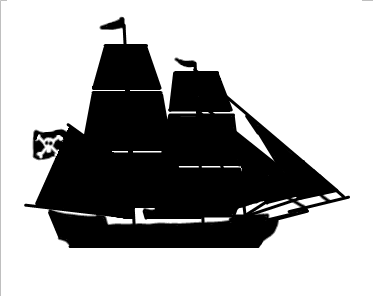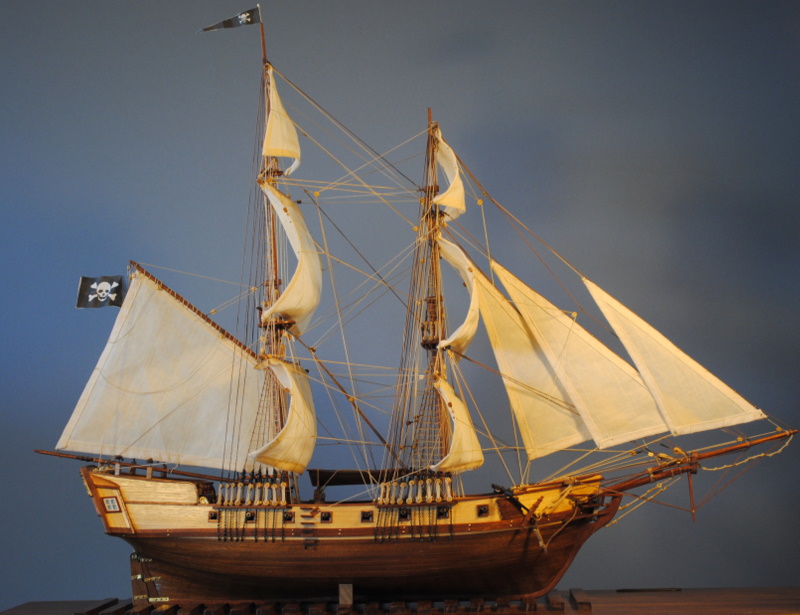Pirate Corsair (late 1600’s)
Particulars
Vessel type: Brigantine rigged sailing ship
Designer: Unknown, but evolved from West European ship types
Builder: Unknown, typically Western Europe or the Americas, but possibly as far East as India
Keel Laid: Unknown but typical for the late 1600’s
Length over all: Approximately 200 feet
Beam: Approximately 70 feet across the main yard.
Construction Material: Wood
Rig Type: Brigantine
Crew Size: About 15 to sail, but many more to fight
Cruising Speed: About 8 knots
Maximum Speed: About 11 knots under the best conditions
Armament: 14 main deck mounted muzzle loading guns, plus lots of small arms
Vessel Description and History
Piracy fills a vacuum. When there is maritime instability, piracy will move in. Piracy can be incredibly profitable; in the classic age of piracy, ships and their cargoes were among the most valuable objects humanity created and spread across the world. If there was a part of the world where the reach of law was weak, pirates showed up or arose from the local populace. To this day piracy persists in parts of the world where there is no law enforcement.
In the late 1600s one famous hotbed of piracy was the American East Coast reaching from the Caribbean as far north as Boston.
Piracy came in many forms, from different origins. Some pirate ships and crews arose from mutiny, while other pirate crews were created in random drinking establishments along the US East Coast where young men (and even occasionally women) decided to band together, get a ship and go on a pirate cruise. Piracy was illegal, but there were forms of private ship capture that were legal. These “pirates” sailed under a letter of marque, which was legal authorization by a country to capture enemy ships. Under a letter of marque, a captured ship had to be delivered to a friendly port where it would be auctioned off. Since pirates could not so easily sell their loot, sailing under a letter of marque could be even more profitable than pure piracy.
It is actually true that many pirates operated under democratic principles, where the captains were elected, and pirates received predetermined shares of the loot.
Pirate vessels came in all shapes and sizes, but in general the recipe was simple: Be able to carry a large number of crew, multiple guns, and be pretty quick, though no quicker than necessary. That means pirate vessels that went on long cruises were bigger than those that went on short cruises. Pirate vessels did not need to be larger than the vessels they captured; they just had to be scarier.
Technical Model Description
Model Scale: 1:80
This model was built from an Ocio Creative kit in 2007. The model is plank on frame (bulkheads).
This model is typical of the type of vessel that would have been operating off the American East coast and in the Caribbean in the 1600’s. Very occasionally pirate ships were custom designed and built, but most often they were conversions of existing vessels. The Bahrs Pirate Corsair model was built by Henry Scheafer from an Ocio Creative kit in 2007. The model is plank on frame, which means it is hollow and resembles the simplified construction of a real ship hull and has a scale of 1:80. The vessel is brigantine rigged and carries about 14 guns.
The model name “Pirate Corsair” is a bit of a shrimp scampi. By definition a corsair is a pirate, it is actually “Pirate Pirate” ship. Corsairs were originally Barbary Coast (the African Mediterranean region aligned with the Ottoman empire) pirate ships very unlike this vessel, but as time went on, that name became associated with all pirate ships.

